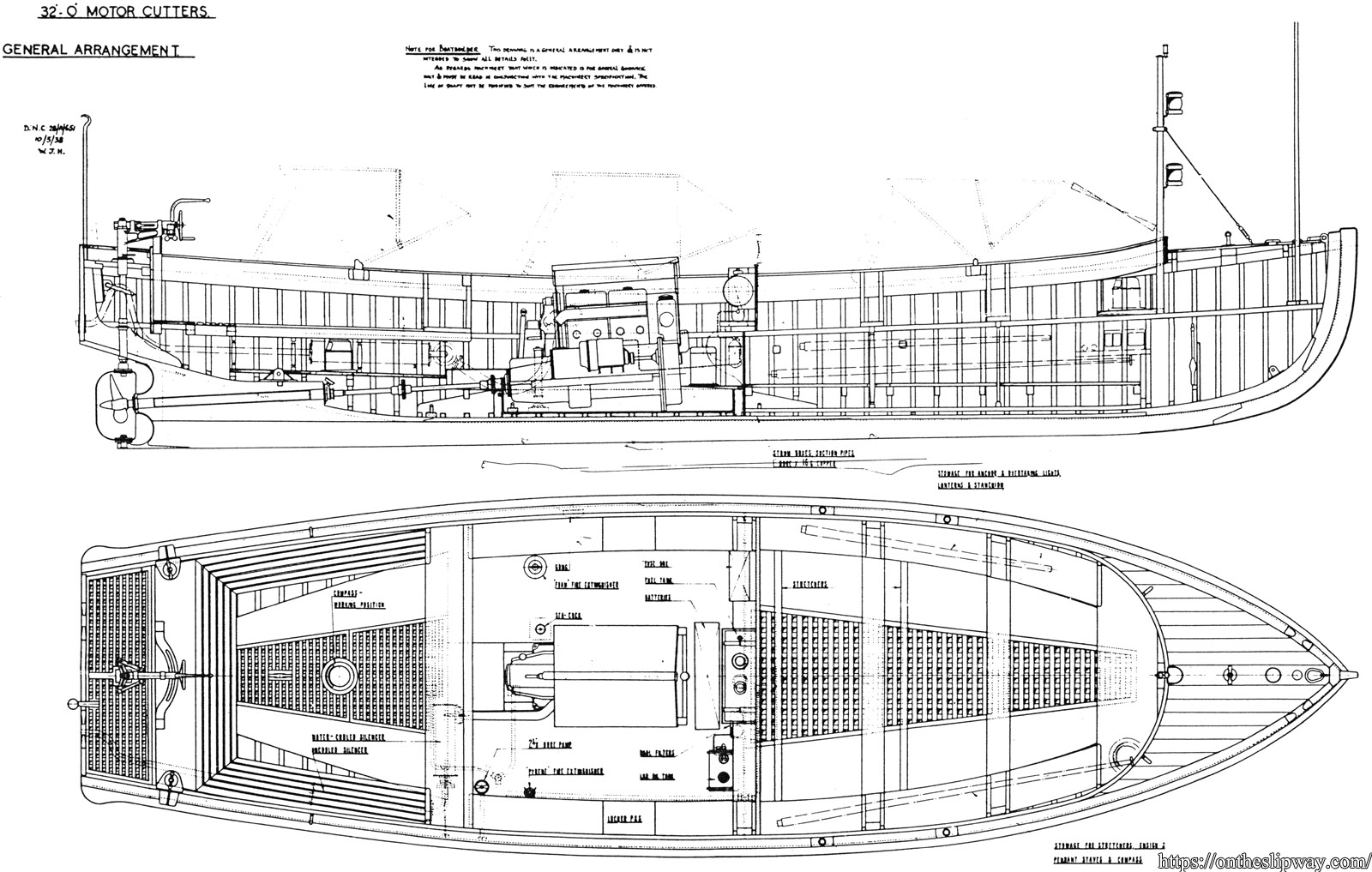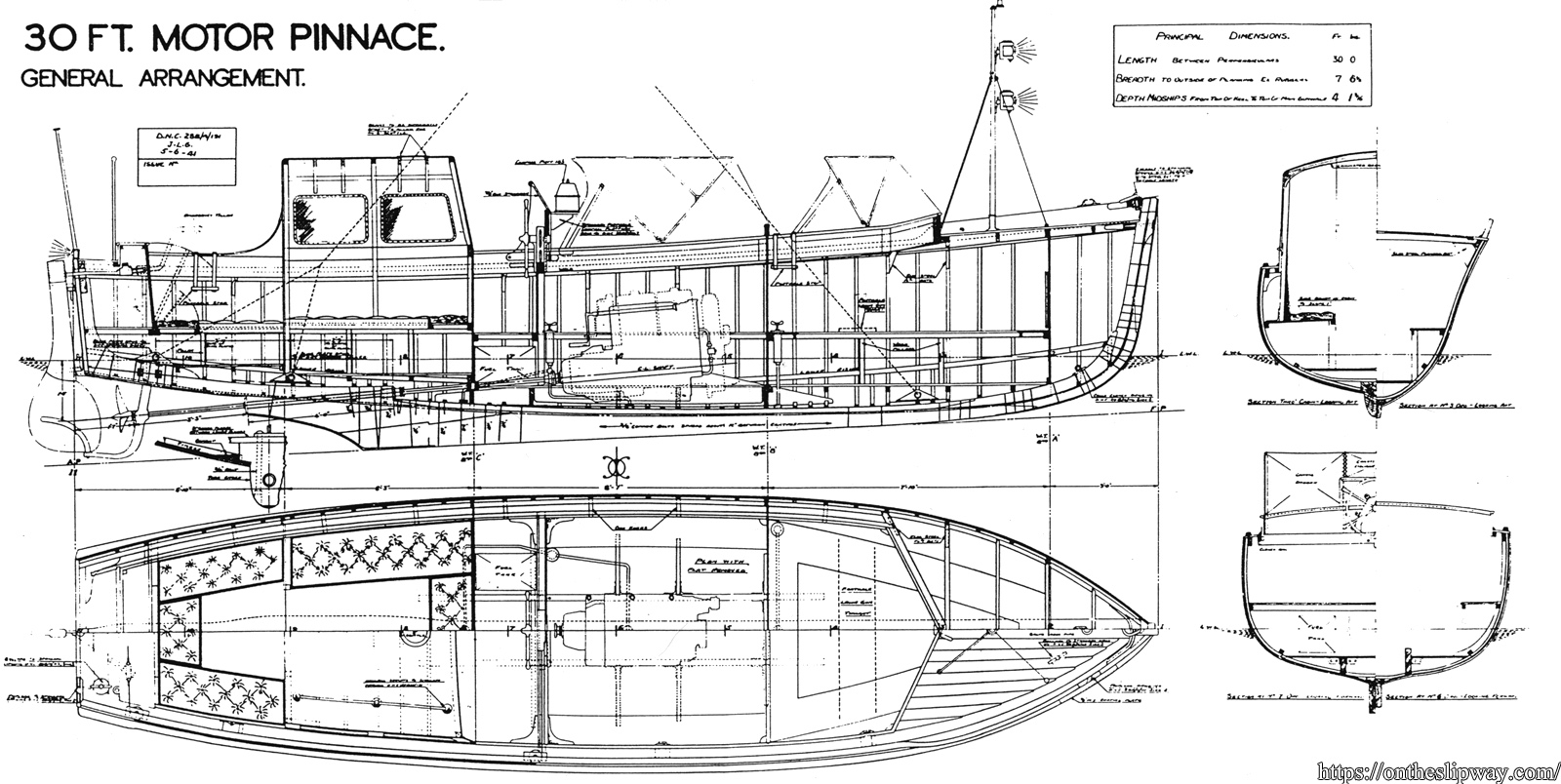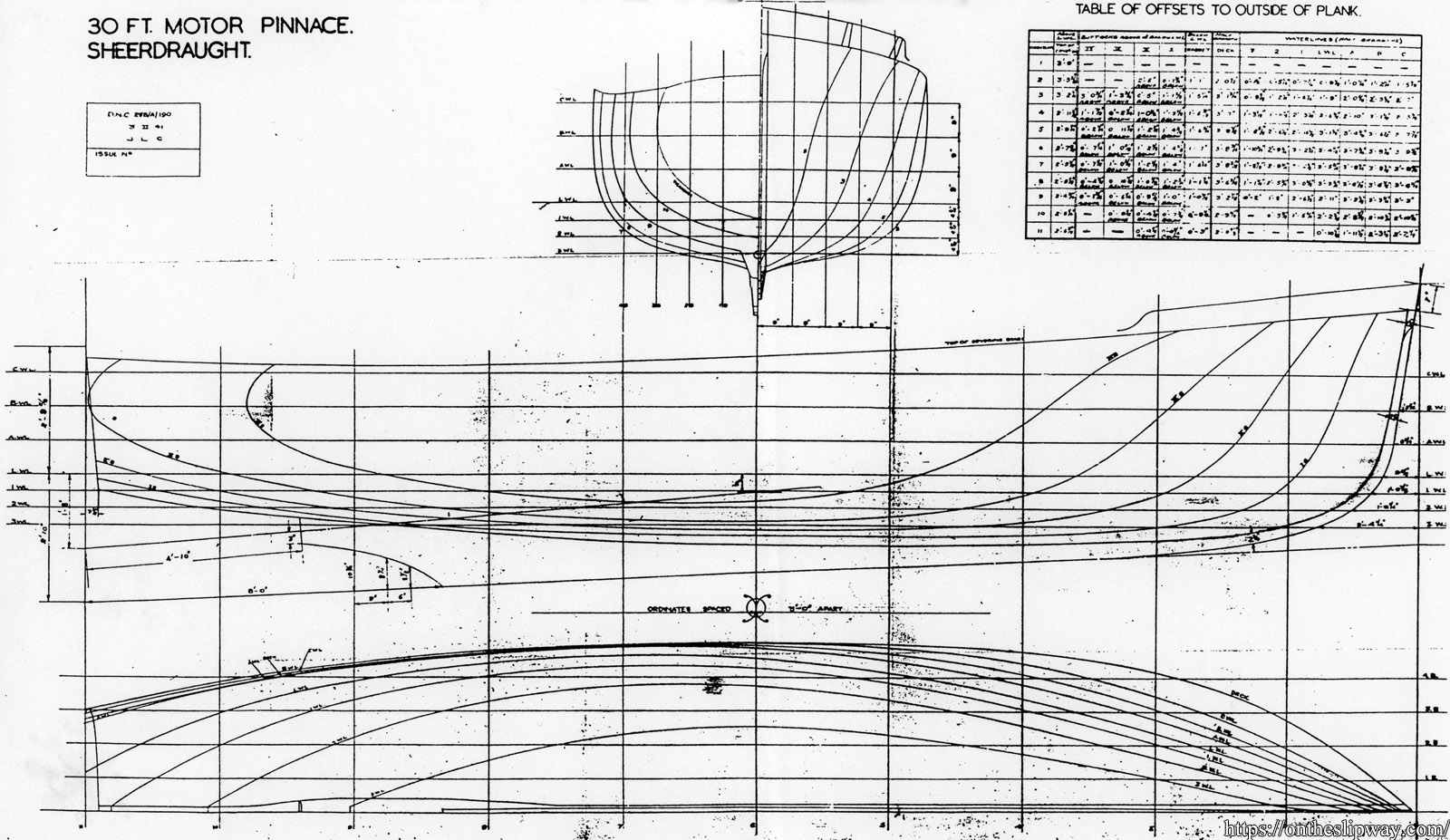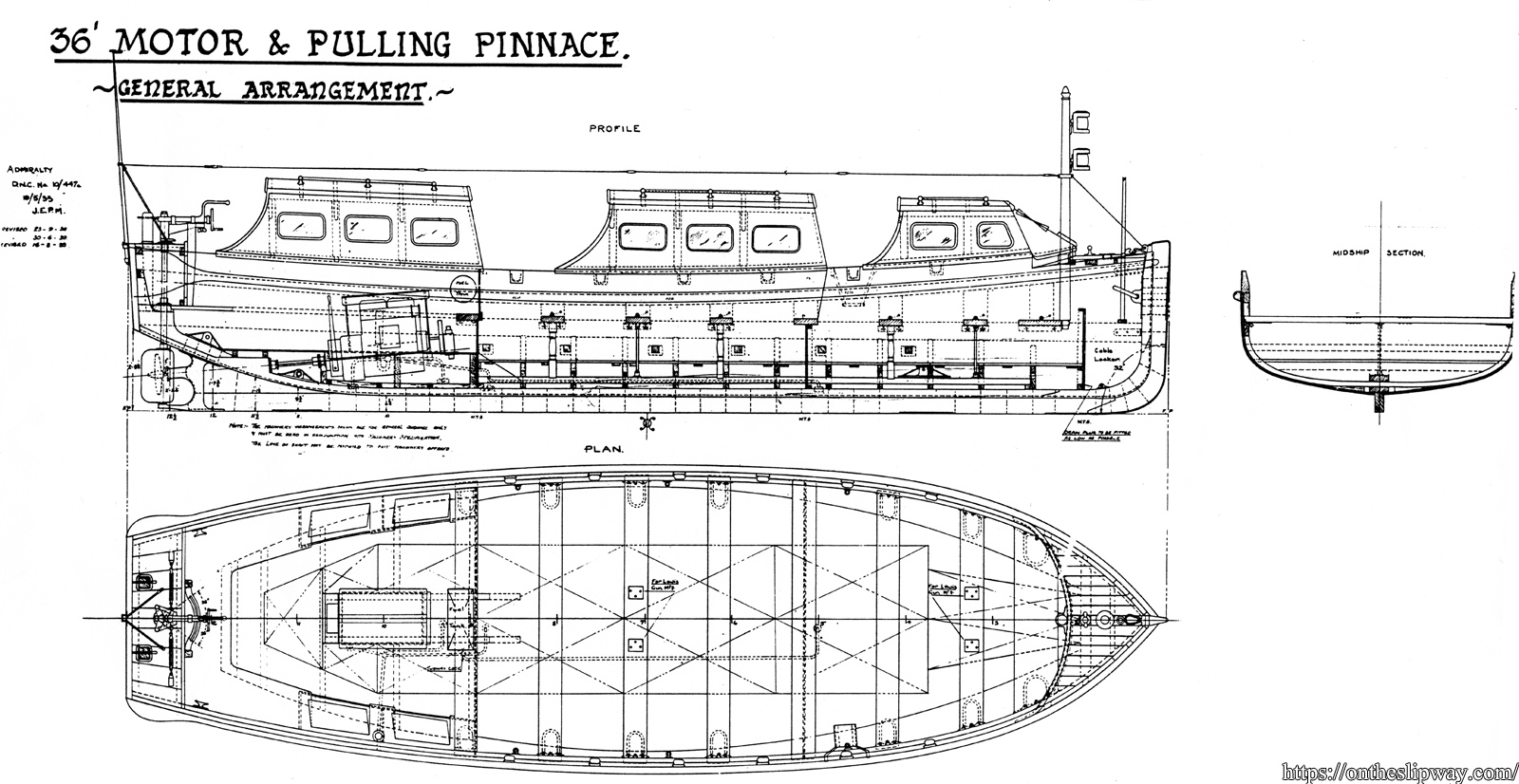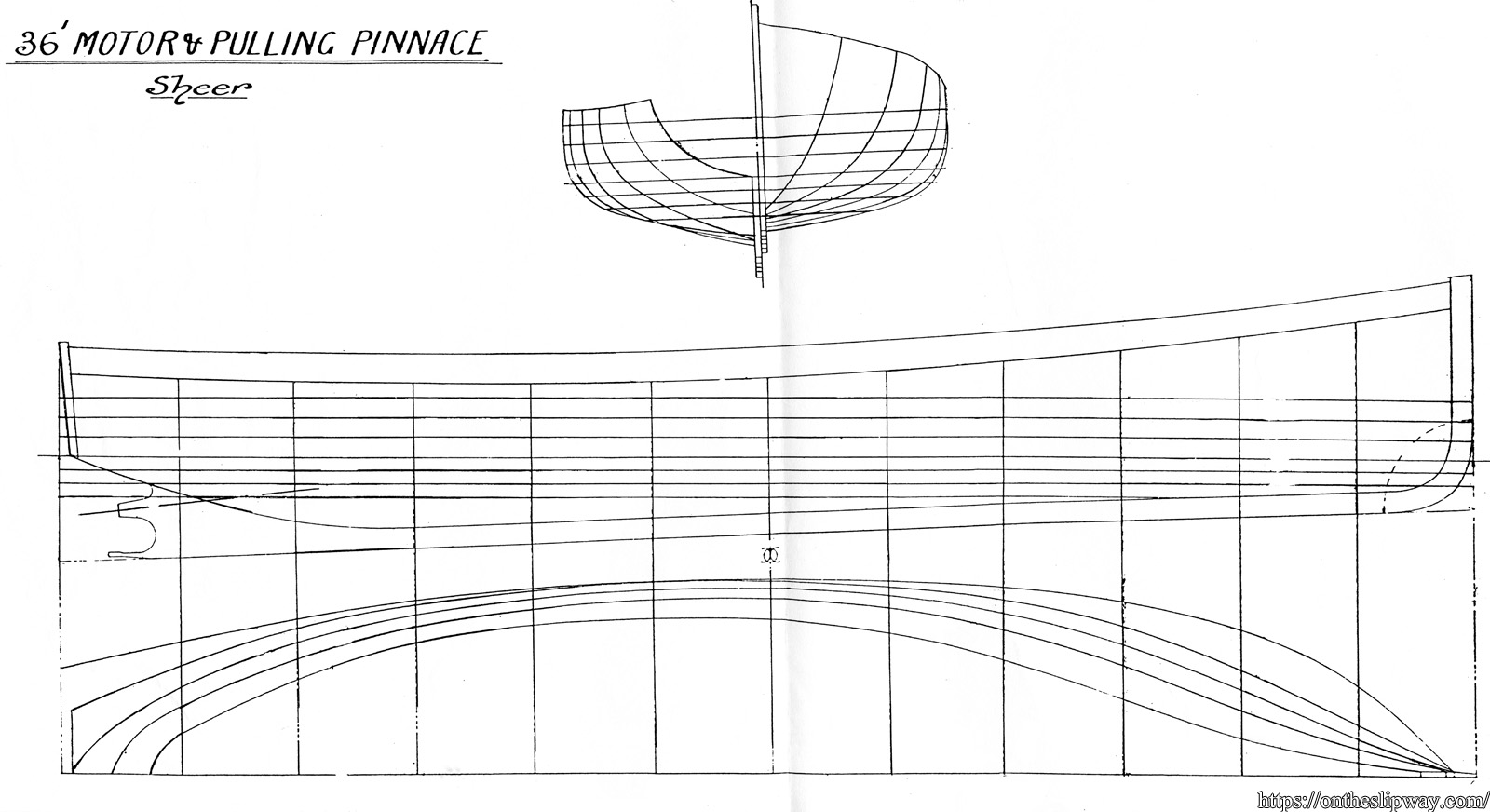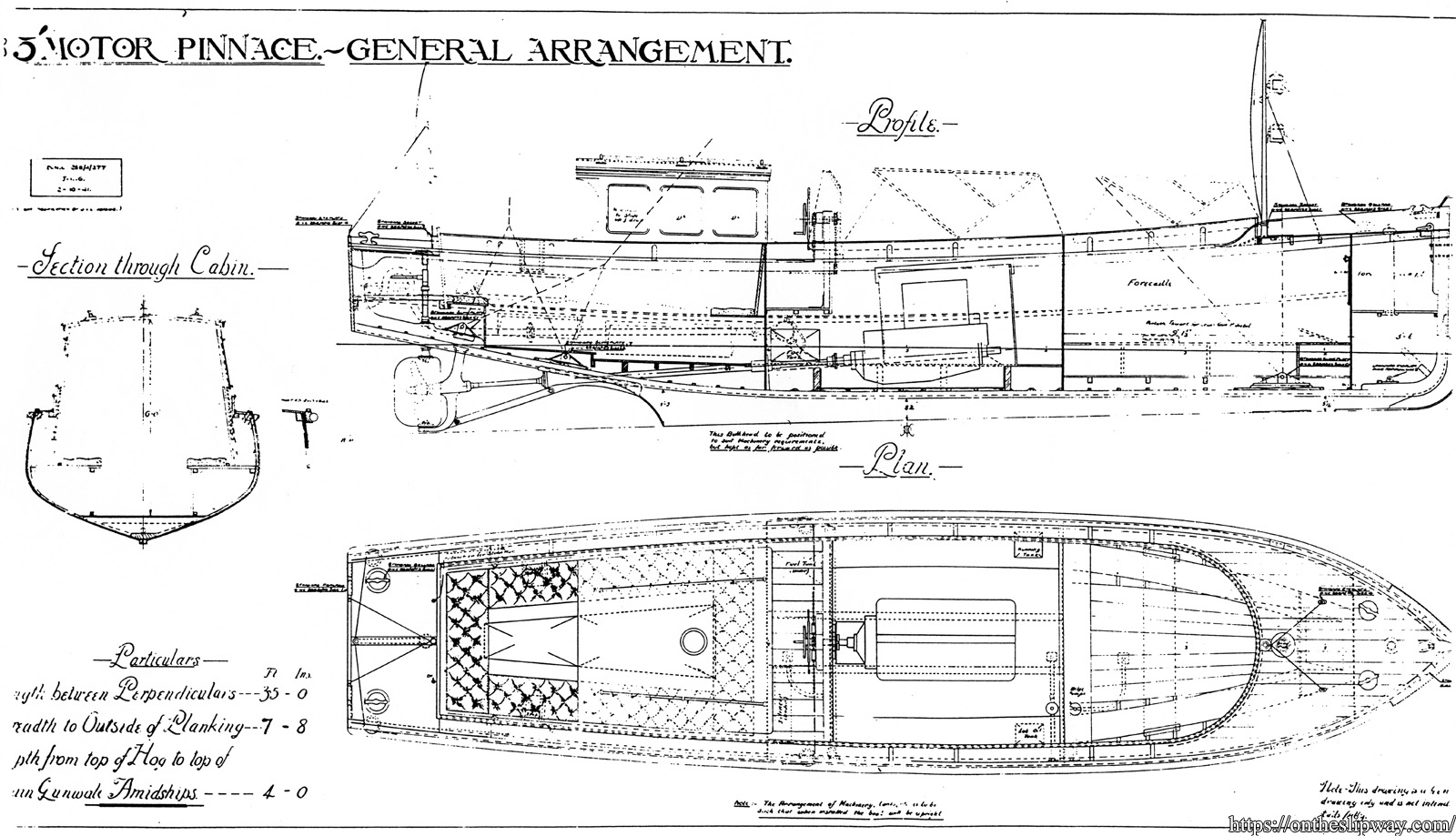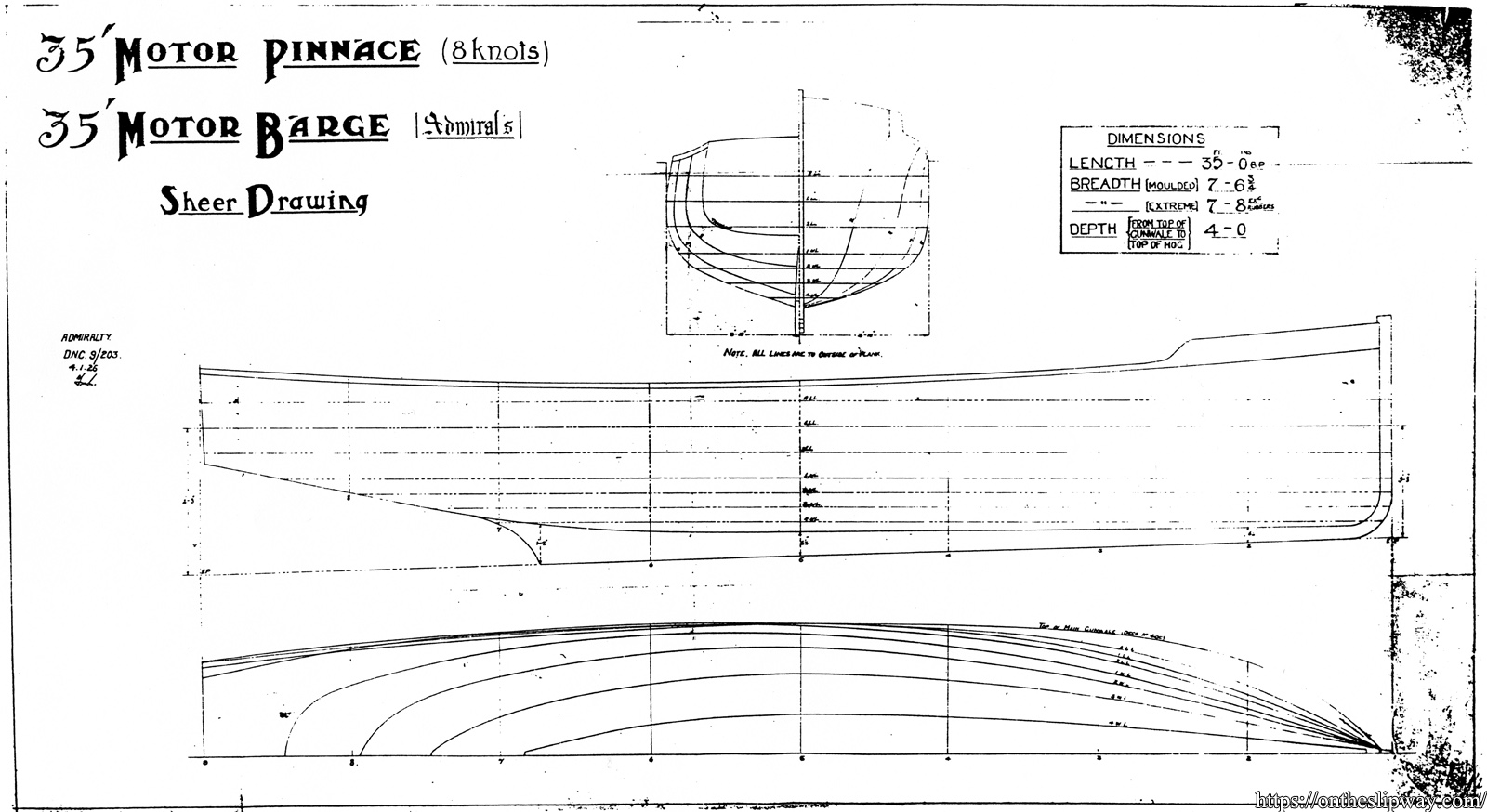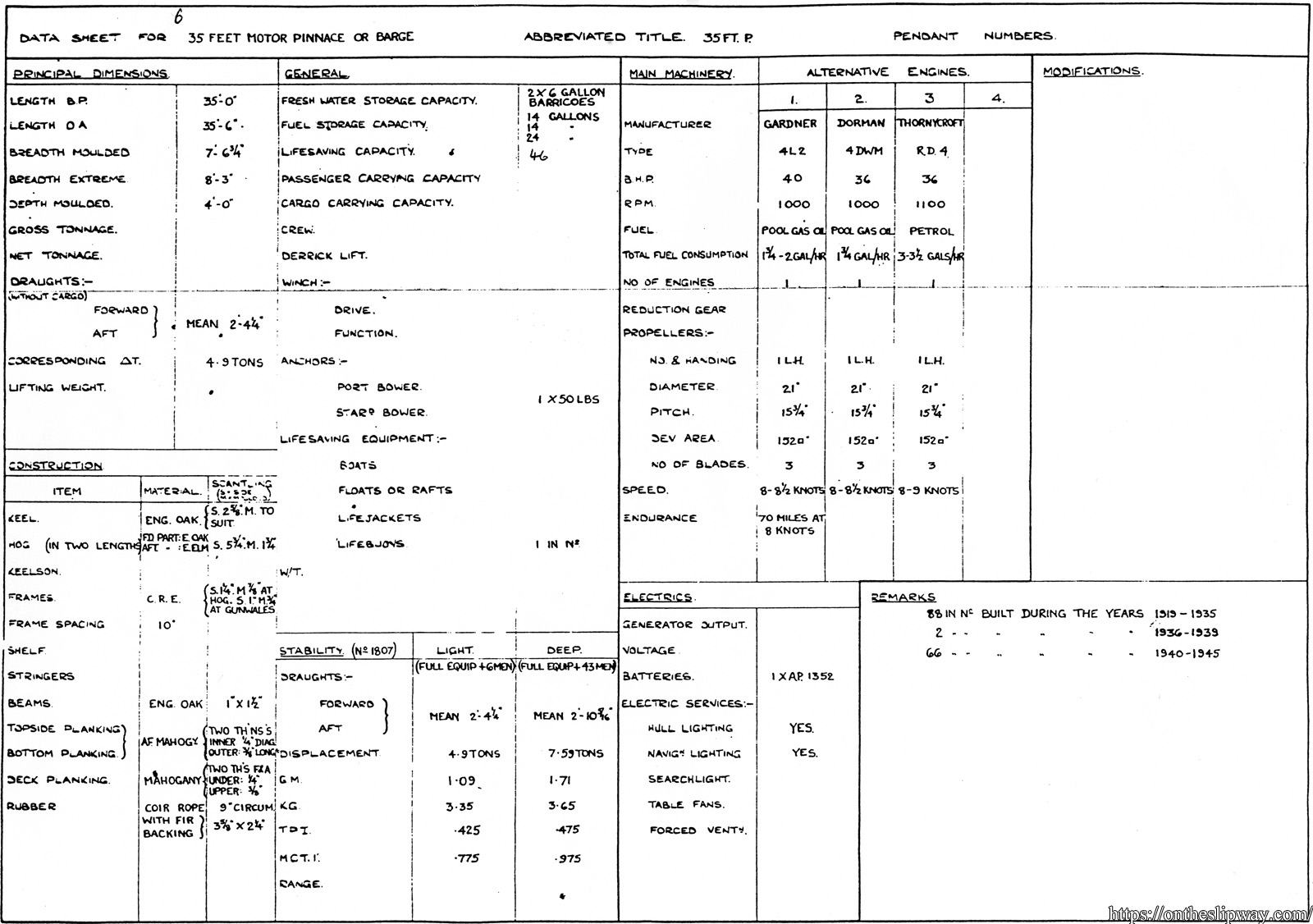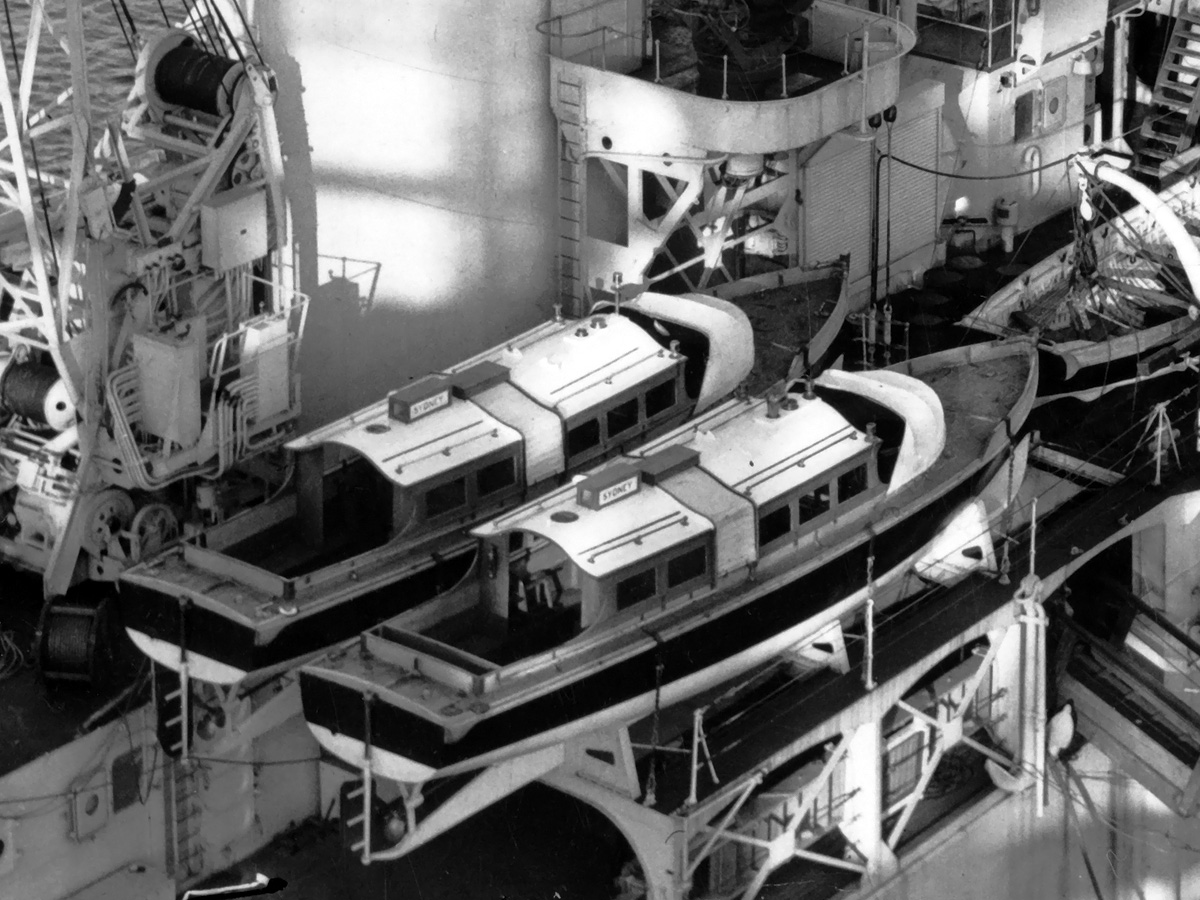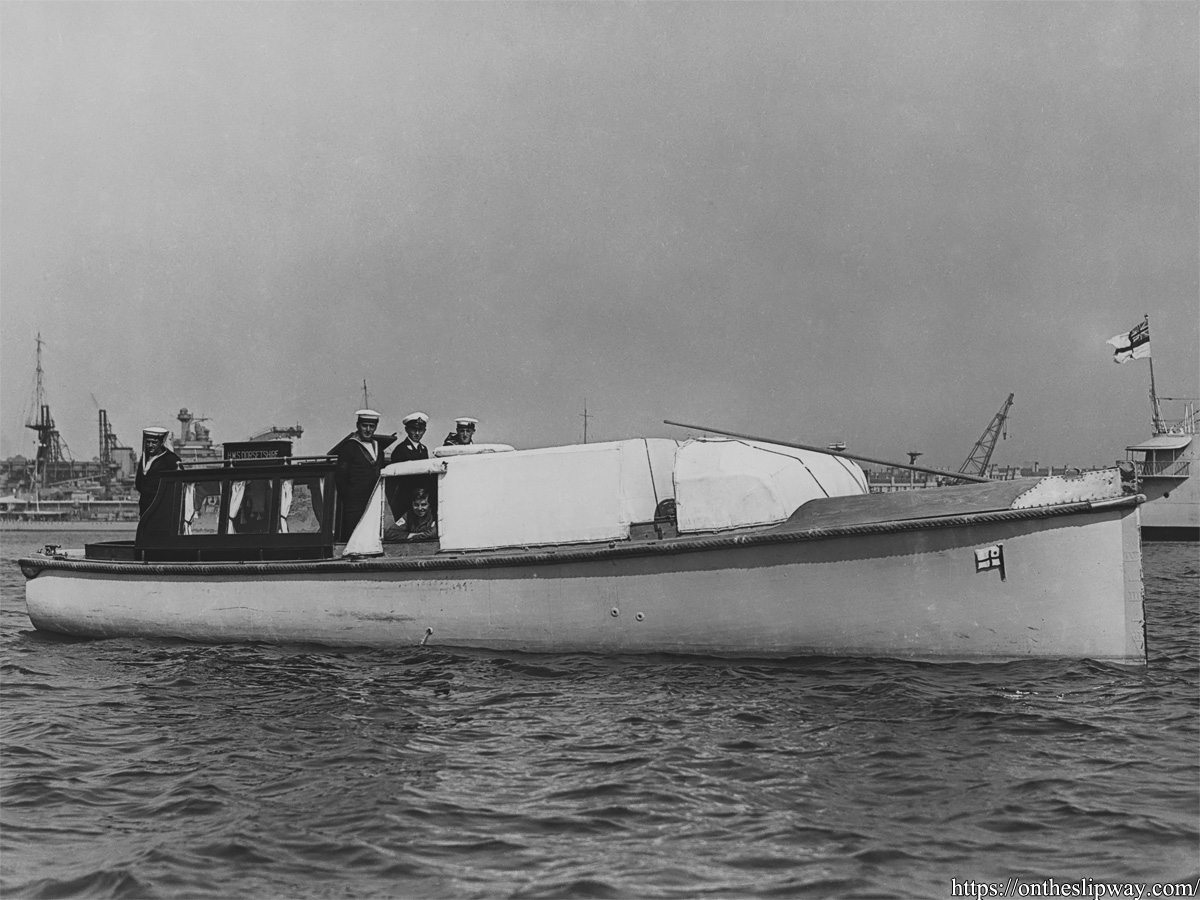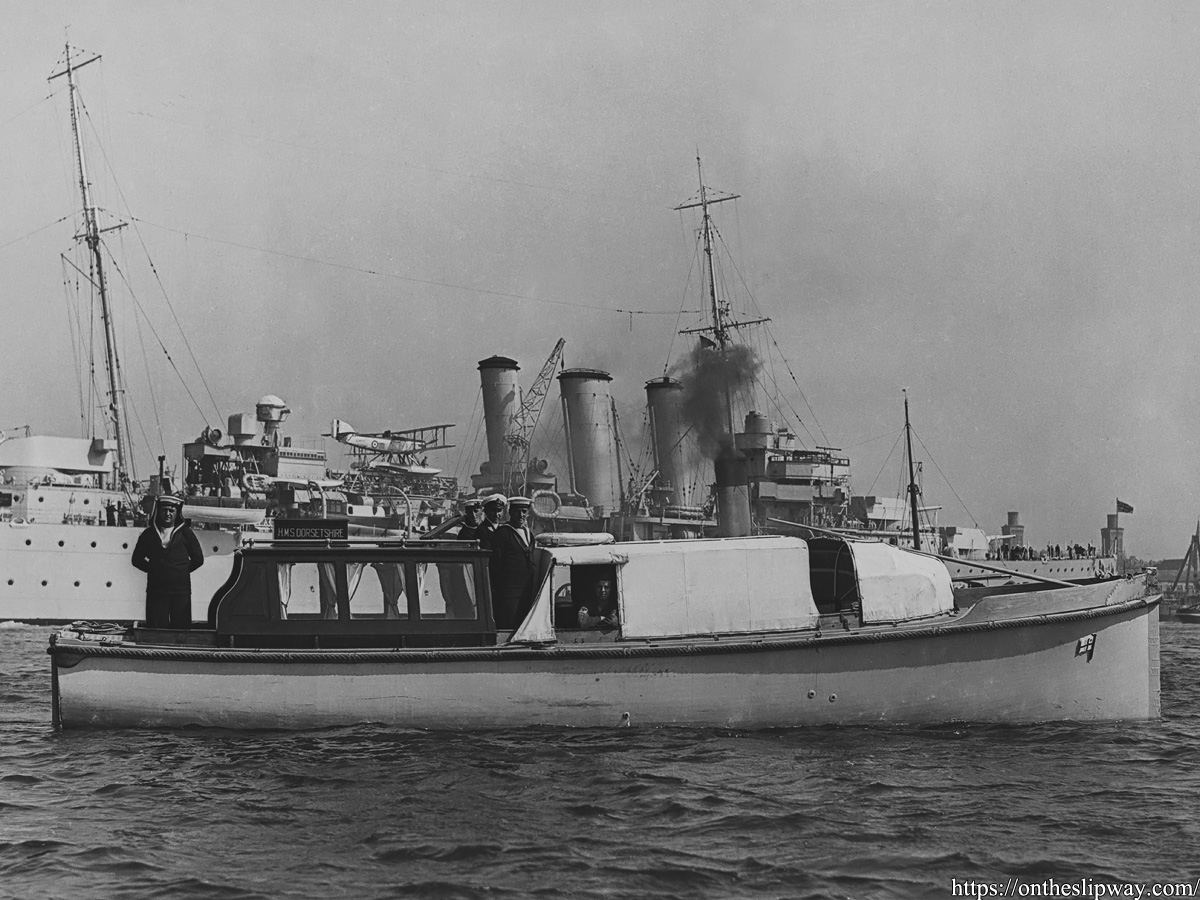Category: Boats & Launches
30 ft Motor Pinnace
NMM link, probably dead within weeks:
General Arrangement, Profile, Plan & Section for ‘Motor Pinnaces 41788-41792’ (1944)
36 ft Motor & Pulling Pinnace
“Up to 1928, 36 ft Sailing Pinnaces with auxiliary motors were obtained by installing motors in existing hulls, additions and modifications being made to the stern structure as necessary to take the propeller shaft, etc.
On S. 4464/28, D.N.C. prepared a new design with the design of the stern structure of the boat initially suitable for taking the installation of auxiliary motor, etc., this design to include sailing gear, was approved on 22/8/1928, but D.N.C. was requested by controller to prepare a design without sailing gear for consideration for further requirements.
In accordance wit the instructions on S. 4464/28 D.N.C. submitted a new design of the 36 ft Motor and Pulling Pinnace on S. 76 (drawing D.N.C. No 10/234) which was approved on 8/1/1930.”

